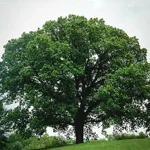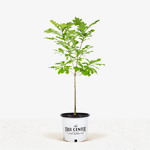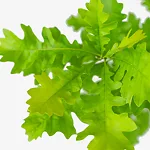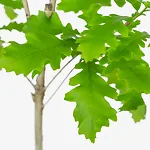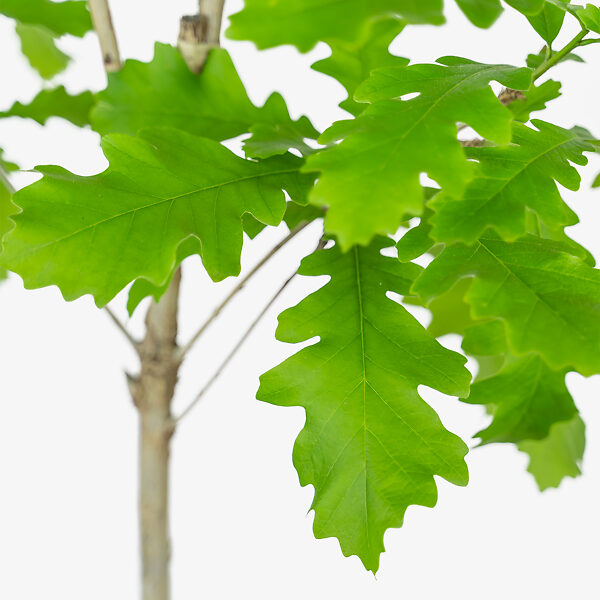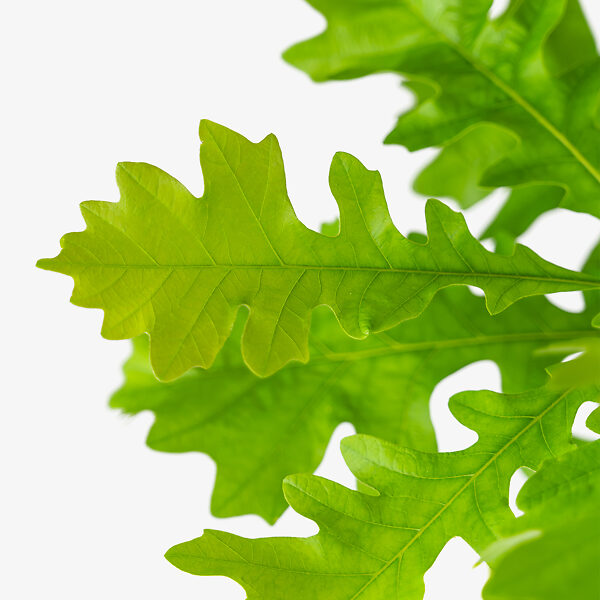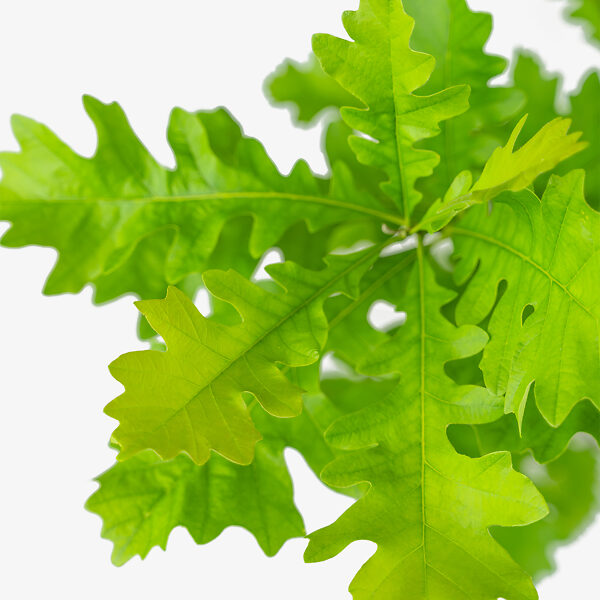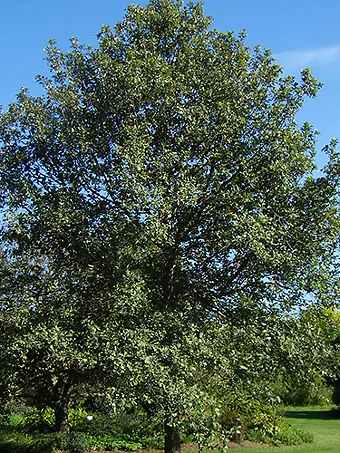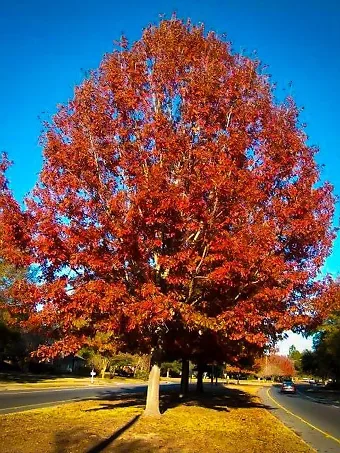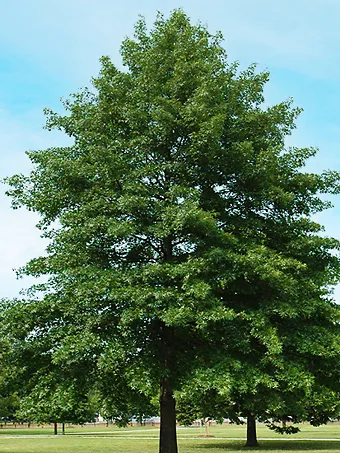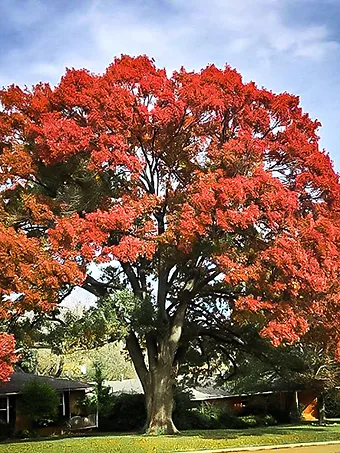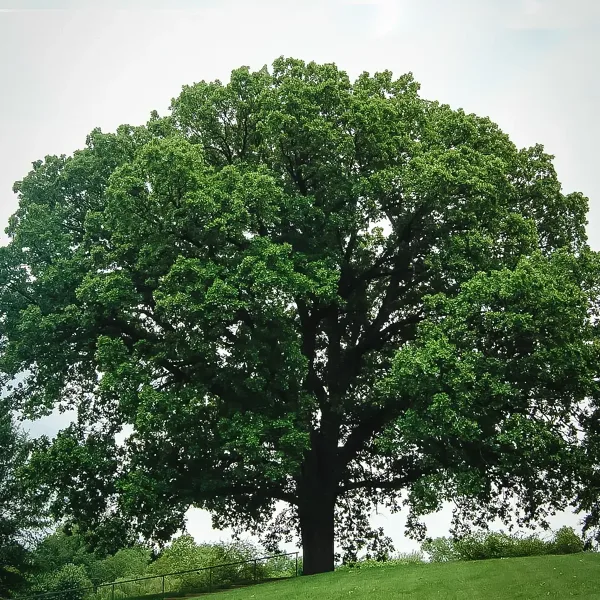
Bur Oak Tree
Quercus macrocarpaView more from Oak Trees
Bur Oak Tree
Quercus macrocarpa
Select Size
30 day - ARRIVE AND THRIVE™ guaranteeLearn more


Special Features

Botanical Name
Quercus macrocarpa
Outdoor Growing zone
3-8
Mature Height
60-80
Mature Width
60-80
Sun needs
Full Sun
Planting a tree is an act of faith in the future, and oak trees live longer than almost any other tree. For a beautiful, rugged specimen or shade tree on a lawn, you can’t beat the Bur Oak. This American native white oak is one of the fastest growing oaks, and the one most tolerant of urban conditions. Young trees grow 12 to 24 inches a year, and soon develop into handsome specimens. Their large, leathery leaves create dense shade to keep you cool in summer, and the broad crown makes for a grand look. You are also helping wildlife, since the large acorns are a valuable winter food for both animals and birds. For a shade tree or to develop a wooded area, the Bur Oak cannot be beaten.
- Majestic, long-lived specimen tree
- Large leathery deep-green leaves
- Heavy acorn crops for wildlife
- Very tolerant of different conditions
- Grows well across almost all the country
Plant the Bur Oak tree in full sun, in almost any soil. It will grow in clay or sand, and once established it is very drought tolerant. Yet it also tolerates periods of flooding, such as during the spring thaw. It is hardy even in zone 5, but it also grows well in the heat and drought of Texas. This tree literally lives for hundreds of years, and it is almost never affected by the minor pests or diseases that may be seen on it. For a real investment in the future, which also grows quickly and that will be a handsome small tree in a few years, nothing beats the Bur Oak.
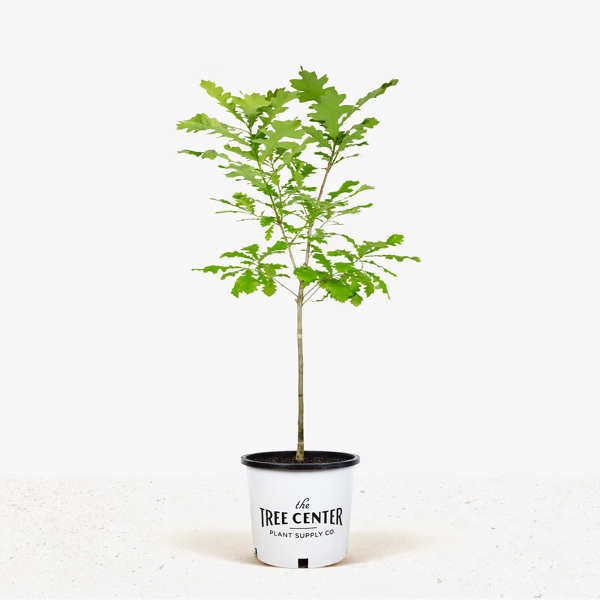
Oak trees have a special beauty, and these symbols of long-life should be the first choice when looking for durable and attractive large trees to plant. Of all the oaks, the Bur Oak is one of the most adaptable, growing all the way from Anchorage, Alaska to Mission, Texas. It grows on a wide range of soil types, and it is both drought resistant and resistant to periods of flooding. This native American tree is a great choice for natural planting, and an important food source for many animals. To top it all off, it is beautiful too, with a wide spreading crown, striking large leaves, and heavy crops of large acorns.
The Bur Oak is a large, spreading, deciduous tree which in time will reach at least 60 feet in height, and often more, even up to 150 feet in exceptional situations. It will spread as wide as it is tall. Younger trees have an upright, conical shape, but as the tree matures it becomes more spreading, so that older trees have a broad, rounded crown covering a considerable area. The leaves are large, between 6 and 12 inches long, deep green and with a leathery texture. They are deeply divided into 5 to 9 lobes, typically with two deep divisions around the middle of the leaf, giving it a characteristic ‘waisted’ look. In fall the leaves turn yellow brown. The bark is medium gray in color, thick and rugged, with deep vertical furrows when it is mature.
This majestic tree is a magnificent specimen for a large lawn, or along a property boundary. Plant it among existing trees, in an open sunny spot. When planting be careful to allow enough room for the mature tree. Plant at least 25 feet from any buildings, and well within your property line. For an avenue or screen, plant 40 feet apart, or more. With its dense crown this is a wonderful shade tree for a larger property. It is also ideal for developing natural areas, as it grows naturally in America. It is one of the fastest growing oak trees, and young trees grow 12 to 24 inches, or even more, in a year, so that a tree will be at least 20 feet tall within 20 years. This is a very long-lived tree – you are ‘planting for the future’ – and trees normally live 200 to 300 years, and even up to 400 years.
Growing Bur Oak Trees
Plant the Bur Oak in a sunny spot – unlike some other deciduous trees it is not shade tolerant when young. It will grow well in almost any soil, becoming largest in deep, moist, well-drained soils. It tolerates both sandy soil and clay, and once established it is very drought resistant and grows well in drier types of soil. Water regularly during the first few seasons. Although oak trees in general have a variety of pests and leaf diseases, these are only very rarely important, and this tree is very low-maintenance, reliable and very long-lived. It is also the best of all the oak trees for urban areas, tolerating poor urban conditions much better than other types of oak.
Appearance
When mature, trees begin to flower, with inconspicuous clusters of greenish-yellow flowers hidden among the spring leaves. These develop to produce large acorns, up to 1½ inches long. These sit in a deep cup, which has a fringed and highly textured surface. This give the tree its alternative name of mossycup oak. These acorns are edible, and they were an important food for both native Americans and early settlers. They are also a valuable winter food for a wide variety of animals and birds. The heaviest acorn crops develop if you have several trees growing near each other, or in the same neighborhood.
History and Origins of the Bur Oak Tree
The Bur Oak, Quercus macrocarpa, grows naturally across a large part of America. It belongs to the larger grouping called ‘white oaks’. It can be found growing naturally in the eastern and central states, around the Great Lakes, and up into southern Canada. Unlike many other large trees, it is not found in dense forests, but rather in open prairie areas, because it prefers to be in full sun. Also, this tree’s thick bark gives it fire protection, so it survives on the prairies where other trees are destroyed by fire. Our plants are produced by seed, from carefully selected acorns taken from the best-quality and most attractive trees. These are carefully grown for several years to produce sturdy and well-balanced saplings trees, ready to quickly establish themselves in your garden. Because of the long production time, these trees are not widely available, and our stock will not last long. So, plant a tree, and choose the Bur Oak now, while we still have trees available.
